1. The Easy-Bake Oven (in its original form)
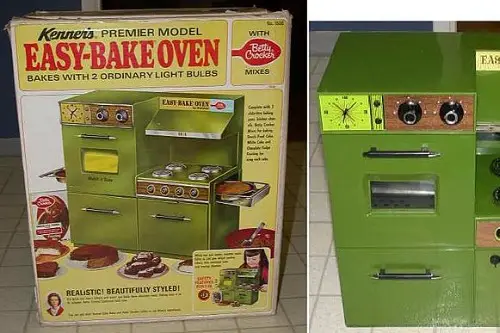
While it seems innocent enough, the original Easy-Bake Oven, which used a 100-watt incandescent light bulb to cook food, was banned in many countries due to safety concerns. Introduced in the 1960s, this popular toy allowed kids to bake small treats, but the heat generated from the bulb could burn a child’s hand if touched. The toy’s design was considered a fire hazard in countries like the UK, and other nations quickly followed suit in banning the oven for safety reasons. Despite its charm and long-lasting popularity in the U.S., it was deemed too risky by safety regulators elsewhere.
Countries like Canada and Japan didn’t want to take the risk of a child accidentally touching the bulb, which could lead to severe burns. The design was too simple, lacking any sort of insulation to protect users from the heat. Over the years, Hasbro redesigned the Easy-Bake Oven, removing the incandescent bulb and replacing it with a safer heating element, according to Melanie Green from Mashed. While the updated version is widely accepted today, the original version remains banned in many countries for its potential dangers.
2. The Gilbert U-238 Atomic Energy Lab
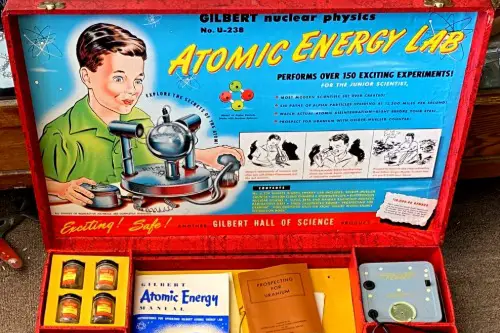
Imagine giving a child a toy that involved handling actual uranium! That’s what the Gilbert U-238 Atomic Energy Lab did in the 1950s, and it was a huge hit in the U.S. at the time. The set allowed kids to experiment with uranium, creating a real radiation exposure risk. Despite being marketed as a fun science kit, it posed significant health dangers, and other countries quickly banned it due to radiation fears.
The idea of letting children experiment with radioactive materials did not sit well with many countries outside the U.S. Health authorities in the UK and elsewhere cited the potential long-term effects of exposure to radiation, especially at a young age. While the toy was intended to spark scientific curiosity, the risks far outweighed the educational benefits. As a result, the toy was discontinued, Jess Thompson from Newsweek explains, but it remains one of the most bizarre (and dangerous) toys ever sold.
3. Lawn Darts

Lawn darts were once a staple of outdoor play in the U.S., especially during summer picnics and barbecues. These metal-tipped projectiles, which were thrown into the air and aimed at a target, were banned in many countries because of their potential for serious injury. In the U.S., they were legal until the 1980s, when reports of accidents involving children led to a nationwide recall. The sharp metal tips of the darts, when misthrown, could cause dangerous impalements, especially if kids were involved in the game unsupervised.
Other countries, like Canada and the UK, took a much stronger stance, banning them much earlier due to their safety hazards. The fun of lawn darts didn’t outweigh the risks, and their ban in many places around the world was a clear response to safety concerns. In fact, the toy was so dangerous that the U.S. Consumer Product Safety Commission had to step in, urging the removal of these toys from store shelves, according to Matt Soniak from Mental Floss. These days, safer versions of the toy, using plastic tips, exist, but the original lawn darts are still banned in most places.
4. Creepy Crawlers
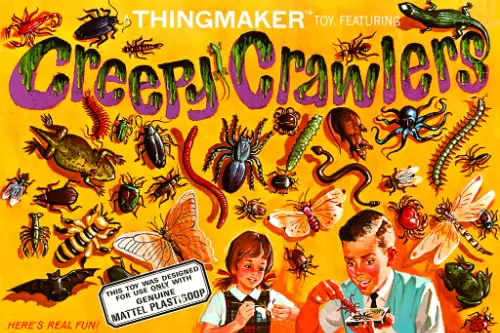
Creepy Crawlers, introduced in the 1960s, allowed kids to create their own rubber insects and creatures using a heated metal mold. The idea behind it was fun: kids could pour goop into the mold, wait for it to heat up, and then pop out a custom bug or critter. But the problem was the toy’s reliance on a metal heating plate, which could cause burns if touched by a curious child. Because of this, Creepy Crawlers were banned in several countries, especially those with stricter child safety regulations.
The risk of burns and the potential for children to misuse the hot plates led to widespread bans in the UK and Europe. Other countries felt that the product was simply too dangerous for kids to handle, given its reliance on high temperatures. Despite this, the toy has made a comeback with updated, safer designs, according to Phil Edwards from Trivia Happy. Today, you can still find Creepy Crawlers, but the risk of burns is minimized with modern safety features like insulated trays.
5. Aqua Dots
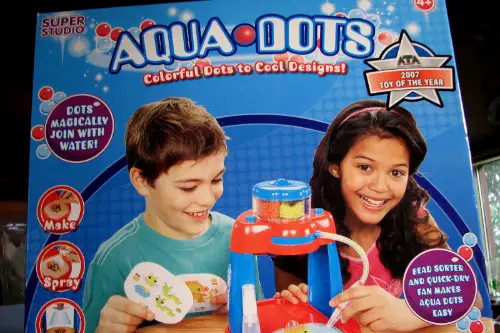
Aqua Dots, a popular craft toy, seemed innocent enough: kids would arrange small, colorful beads on a pegboard to create designs, then spray them with water to make the dots stick together. However, the toy was banned in multiple countries after it was discovered that the beads contained a toxic substance called GHB (gamma-hydroxybutyrate), which is a dangerous chemical that can cause unconsciousness and even death. The toy was marketed in the U.S., but after reports of kids ingesting the beads, it was recalled in 2007 and banned in several countries around the world.
The issue was particularly alarming because children could accidentally swallow the beads, putting their health at risk. In response, many countries such as Canada, Australia, and the UK removed Aqua Dots from store shelves almost immediately. The toy’s dangers were highlighted by the severe reactions children had to the chemical when ingested. It wasn’t long before Aqua Dots was discontinued, and safer alternatives emerged to fill the void in the market.
6. Tickle Me Elmo
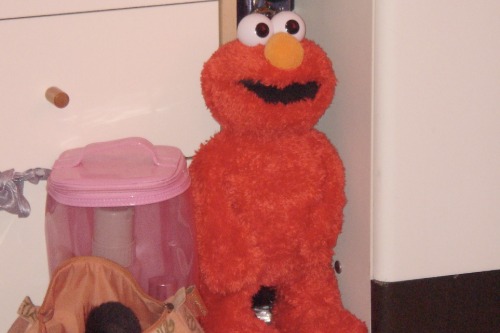
Tickle Me Elmo was one of the most sought-after toys of the 1990s in the U.S., with lines of parents waiting outside stores for hours to get their hands on the talking, giggling Elmo doll. However, in some countries, Tickle Me Elmo faced bans due to concerns over the potential for children to be startled or frightened by the toy’s unpredictable movements. The toy’s loud giggling and uncontrollable laughter caused concern among regulators in Europe, who feared it could be disturbing to younger children.
In particular, the doll’s erratic movements were considered too intense for some children, leading to a backlash in countries with more conservative toy safety standards. Countries like the UK and Germany expressed concerns that the toy could be a choking hazard if the inner mechanisms became loose. While the toy was a massive success in the U.S., these safety issues led to certain European countries deciding against its sale. Eventually, safety redesigns were implemented, but for a while, the toy was banned in various places.
7. X-Ray Glasses (The Magic X-Ray Vision Glasses)
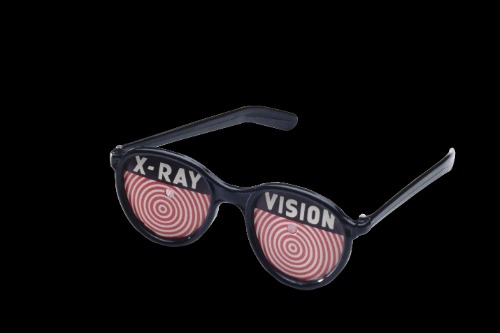
These novelty “X-ray vision” glasses were marketed in the 1950s as a fun way to “see through walls” or clothes, but the reality was much less exciting. They were simply paper-thin cardboard with some sort of illusionary pattern inside, but the very idea of a child being given the ability to “see through” things was deemed inappropriate. Many countries, particularly in Europe, considered the glasses to be promoting unhealthy curiosity and even voyeurism among young children, and they quickly banned them.
The idea of selling such a product to children sparked outrage in places like the UK, where child safety and mental well-being were major concerns. Aside from the obvious privacy issues, the glasses also perpetuated unrealistic and potentially harmful ideas about what children should be interested in. Today, the concept seems absurd, and these glasses are long gone, but back in the 1950s, they were an eye-catching (if highly inappropriate) marketing gimmick.
8. Skydancer Dolls
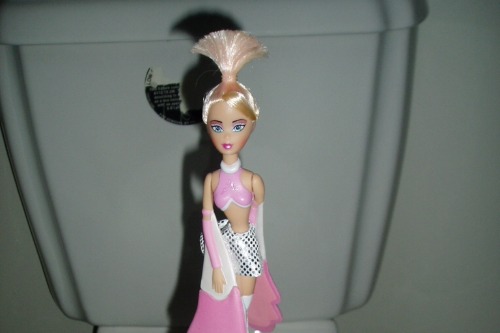
Skydancer dolls were a hit in the late 1990s in the U.S., with their spinning, flying action that was supposed to entertain children for hours. However, the dolls were banned in some countries because of the potential for serious eye injuries. The flying mechanism, which involved launching the doll into the air, was unpredictable and could easily injure a child or bystander if the doll veered off course. Reports of injuries led to a swift ban in places like the UK and Canada.
Though Skydancer dolls were marketed as fun, the unpredictable nature of their flight path made them unsafe for children, especially when they could strike an unintended target. Other nations were quick to react, pulling the dolls from shelves to protect children from harm. The toy was eventually discontinued due to its inherent risks, though it had brief success during its time. In retrospect, the idea of a flying toy without sufficient safety measures seems reckless, but at the time, it was just another casualty of overly ambitious toy design.
9. The Hula Hoop (in the 1950s)

The hula hoop, a simple yet beloved toy, was banned in some parts of the world during its initial launch in the 1950s due to its association with “unsuitable behavior.” Some conservative regions feared that the hip gyrations required to use the hoop would encourage inappropriate sexualization of young girls. The toy was wildly popular in the U.S. and was seen as a fun physical activity, but its cultural implications made it controversial in certain countries, especially in the Middle East and parts of Asia.
In these places, the toy was viewed as a symbol of Western cultural influence and was banned for its perceived moral risks. The controversy surrounding the hula hoop died down as the toy became a mainstream part of global childhood play, but during its peak, it sparked debates on what was considered appropriate for children to do. While the hula hoop was a symbol of innocent fun in the U.S., other parts of the world saw it through a more prudish lens. Over time, the hoop became widely accepted, but its early controversy is an interesting chapter in toy history.
10. The Nerf Crossbow

The Nerf Crossbow was one of the most fun toys for kids in the U.S., combining the power of a crossbow with the soft, safe materials of Nerf darts. However, several countries, including the UK and Australia, banned this particular Nerf product due to concerns about it causing injury. Even though the crossbow only fired foam darts, its projectile-based design raised alarms about eye injuries or potential misuse. In places where toy gun violence was a major issue, the Nerf Crossbow was seen as a problematic toy that encouraged unsafe play.
In the U.S., it was mostly seen as harmless fun, but international regulators had stricter safety guidelines, which led to the toy’s removal from shelves in several countries. Concerns about the potential for accidents, especially among younger children, prompted the bans. Despite its playful design, some countries weren’t willing to take the risk, and the Nerf Crossbow was pulled from markets outside the U.S. Nerf, however, continued to innovate, creating safer alternatives to the controversial crossbow.
11. The Jarts (Jumbo Lawn Darts)
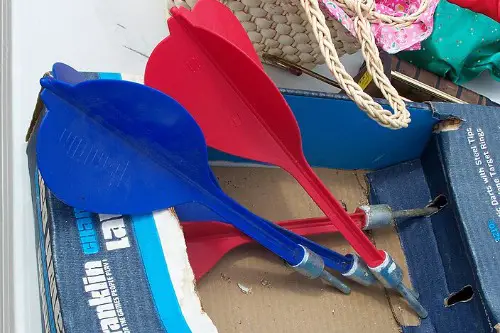
Jarts, or Jumbo Lawn Darts, were a popular outdoor toy in the U.S. in the 1970s and ’80s. These large, heavy darts with sharp metal tips were thrown toward a target, and the idea was to land them within a ring on the ground. While they were legal and enjoyed by many American families, the danger they posed, particularly to children, led to their ban in several countries. The metal tips could easily injure someone, especially if the dart missed the target and landed near a person or pet.
In countries like the UK, Canada, and Australia, Jarts were banned for their safety risks, as they could cause serious harm if thrown in the wrong direction. Reports of injuries and even deaths led regulators to take action, and many countries enacted laws prohibiting their sale. Despite their popularity in the U.S., the toy’s lack of safety features was considered unacceptable in places with stricter child protection laws. These days, safer versions of lawn darts, made from plastic or foam, have replaced the dangerous metal-tipped Jarts in most countries.
12. The “Buckyballs”
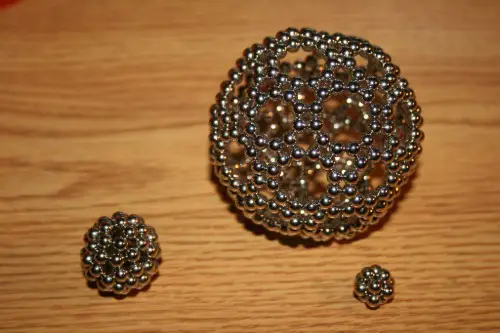
Buckyballs, the small magnetic balls that could be molded into different shapes, were banned in several countries due to serious safety concerns. In the U.S., they were marketed as a fun desk toy for adults, but children soon became the unintended users. When swallowed, the magnets could snap together inside the intestines, leading to potentially fatal injuries. The U.S. saw multiple recalls after reports of severe injuries, but other countries like Canada banned them much sooner.
Regulators in places like Europe and Australia acted quickly, seeing the danger that small, powerful magnets posed to children. The ability to swallow them and cause internal damage was a risk too great to ignore. In response to the dangers, manufacturers pulled the product from the shelves and faced legal actions over unsafe marketing practices. As a result, Buckyballs became a cautionary tale in toy design, particularly regarding small objects with powerful magnets.
13. The Slip ‘N Slide (in certain countries)
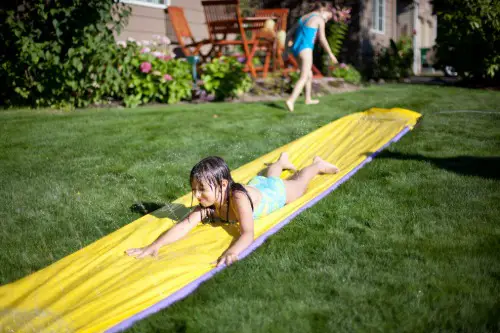
The Slip ‘N Slide, a backyard favorite in the U.S., allows kids to glide across a water-soaked plastic sheet. However, in certain countries like Germany and the UK, it faced bans due to concerns over injuries. The toy’s high-speed sliding and lack of protective padding made it prone to causing abrasions, concussions, and even broken bones. European countries have stricter regulations regarding toys that can cause injury from excessive speed or lack of safety features, leading to its removal from shelves.
In the U.S., the Slip ‘N Slide is still a popular summer activity, but its ban in some places highlights the differing safety standards across the world. While it’s a fun way for kids to cool off, countries with stricter toy regulations have taken the toy’s risk factor seriously. Fortunately, safer versions of the toy have been developed, but the Slip ‘N Slide’s rocky reception in some parts of the world serves as a reminder that safety standards can vary greatly depending on where you are.


